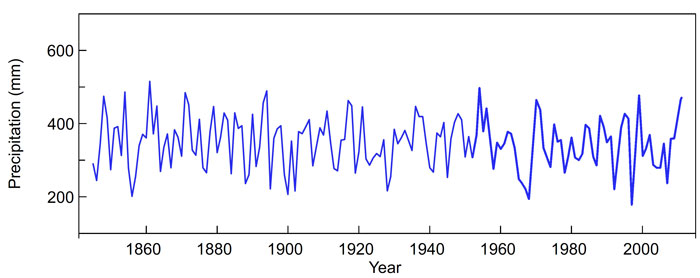From CO2Science: Climate alarmists often contend that global warming is responsible for creating more frequent and greater extremes of various types of weather, including precipitation. It is fairly simple to test this thesis using observational data. However, most observing stations have only been in existence for a few decades. Therefore, it is important to utilize proxy records that extend back much further in time to help provide the proper perspective for evaluating a claim of a CO2-induced influence on a given weather parameter. One such study that allows for this type of investigation comes from Xu et al. (2019), who analyzed oxygen isotopes of tree ring cellulose from Pinus taiwanensis trees growing in the Dabie Mountains of the lower Yangtze River basin to produce a historical record of precipitation in this region over the period 1845-2011.
Paper Reviewed: Xu, C., Shi, J., Zhao, Y., Nakatsuka, T., Sano, M., Shi, S. and Guo, Z. 2019. Early summer precipitation in the lower Yangtze River basin for AD 1845-2011 based on tree-ring cellulose oxygen isotopes. Climate Dynamics 52: 1583-1594.
The resultant chronology, which is a proxy for early summer (May-June) precipitation, is depicted in the figure below.
A simple view of the record reveals nothing out of the ordinary. In fact, there is nothing that appears unusual, unnatural or unprecedented that would lead one to believe there was a CO2 influence. And that summation would be correct based on Xu et al.’s analysis.
According to the seven researchers, the lower Yangtze River basin has experienced “wet periods with precipitation above the mean value ... in 1845-1891, 1907-1917, and 1935-1959,” whereas dry periods occurred in “1892-1906, 1918-1934, and 1960-2011. But there were also a total of 28 anomalously wet and 28 anomalously dry years across the record, defined by those years outside one standard deviation from the mean value of 347.64 mm per year. And upon further examination, Xu et al. report that “anomalous events frequently occurred in the 1880s, 1890s and 1910s (5 events per decade), but seldom in the 1980s and 2000s (only 1 event per decade).”
Consequently, it would appear that the frequency of anomalous wet and dry years has declined in recent decades, having been more common in the earlier part of the record than the latter. What is more, such anomalous wet and dry events were more prone to be associated with colder temperatures experienced during the early portion of the record versus the more recent warm part experienced at the end of the 20th and into the beginning of the 21st centuries. Therefore, it would thus appear that warming had a mitigating impact on the frequency of anomalous precipitation events in the lower Yangtze River basin, which conclusion is opposite that typically expected by climate alarmists.

Figure 1. Reconstructed early summer precipitation for the lower Yangtze River Basin over the period 1845-2011. Adapted from Xu et al. (2019).



Is it possible for the webmaster to allow font size to be increased? Even on a tablet the reading is difficult for old eyes...